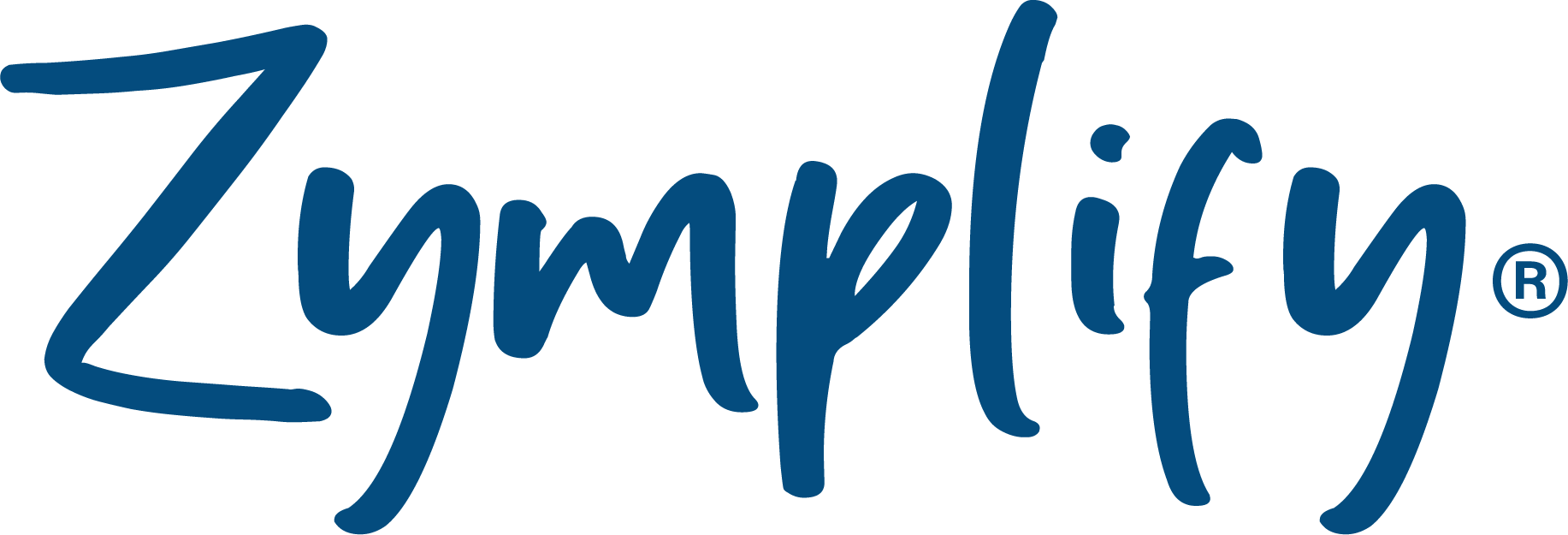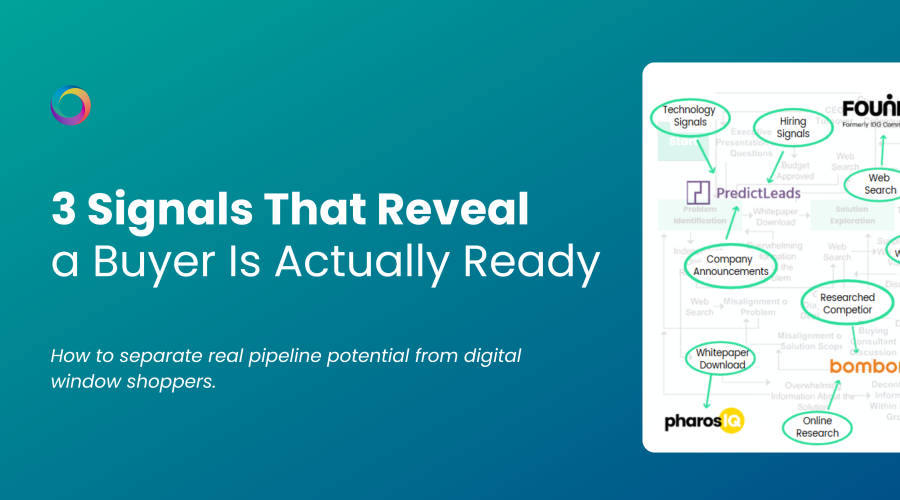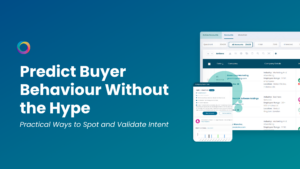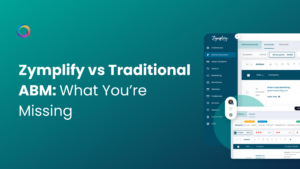Every marketer and seller knows the feeling:
A prospect downloads your content.
The lead score goes up.
You send the follow-up.
And then… nothing.
They don’t respond.
They don’t book.
They vanish.
So what went wrong?
You acted on a signal — but it was the wrong kind. Because not all engagement is equal, and not every signal means someone’s ready to buy.
In a world of clickbait, content overload, and generic intent data, knowing which signals truly indicate buying readiness — and which don’t — is the difference between wasted motion and revenue momentum.
Let’s break it down.
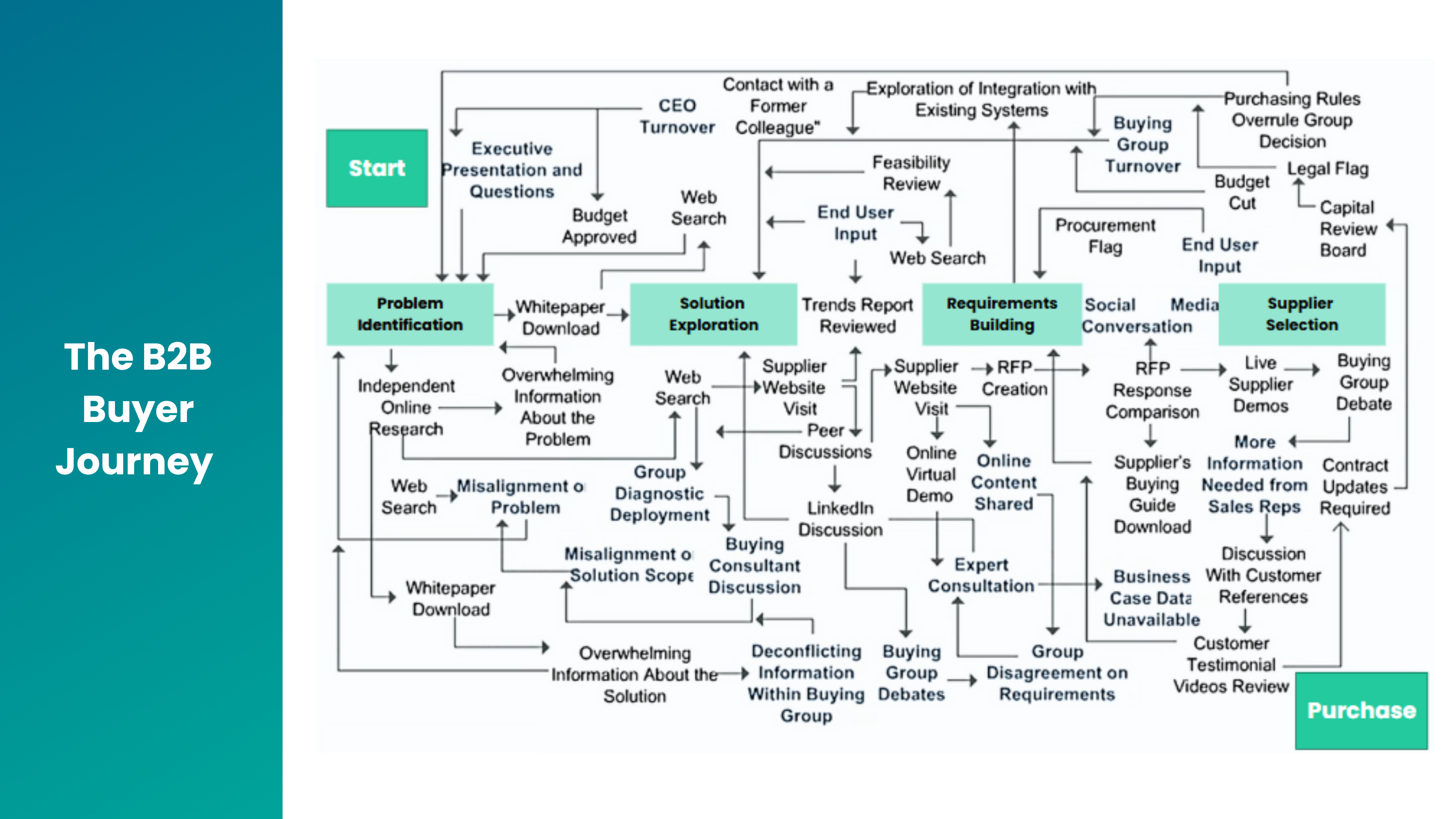
The Problem: We’re Mistaking Curiosity for Intent
Lead gen platforms, marketing automation tools, and even some intent providers have trained us to think that any signal is a good one.
Downloaded an ebook? Hot lead.
Visited your homepage? Time to engage.
Attended a webinar? Definitely in-market.
But here’s the reality:
🧠 79% of leads never convert to sales (MarketingSherpa)
⏳ 67% of lost deals were due to poor timing, not poor fit (Gartner)
👻 Most intent signals today lack contact-level precision or buying-stage context (Zymplify research)
Why? Because many signals we act on are signs of interest — not intent.
Let’s look at the difference.
❌ 3 Signals That Don’t Mean a Buyer Is Ready
1. A One-Off Content Download
Yes, gated content can indicate relevance. But by itself, it doesn’t say much.
People download content for all sorts of reasons — curiosity, research, career development, or just to see what competitors are doing. That doesn’t mean they’re ready to talk to sales.
Example: A marketing exec downloads your “ABM Playbook” — but it’s a casual download after a webinar, with no other activity. That’s interest, not intent.
Watch for:
- Lack of follow-up engagement
- No other account-level signals
- Download from a junior or non-buyer persona
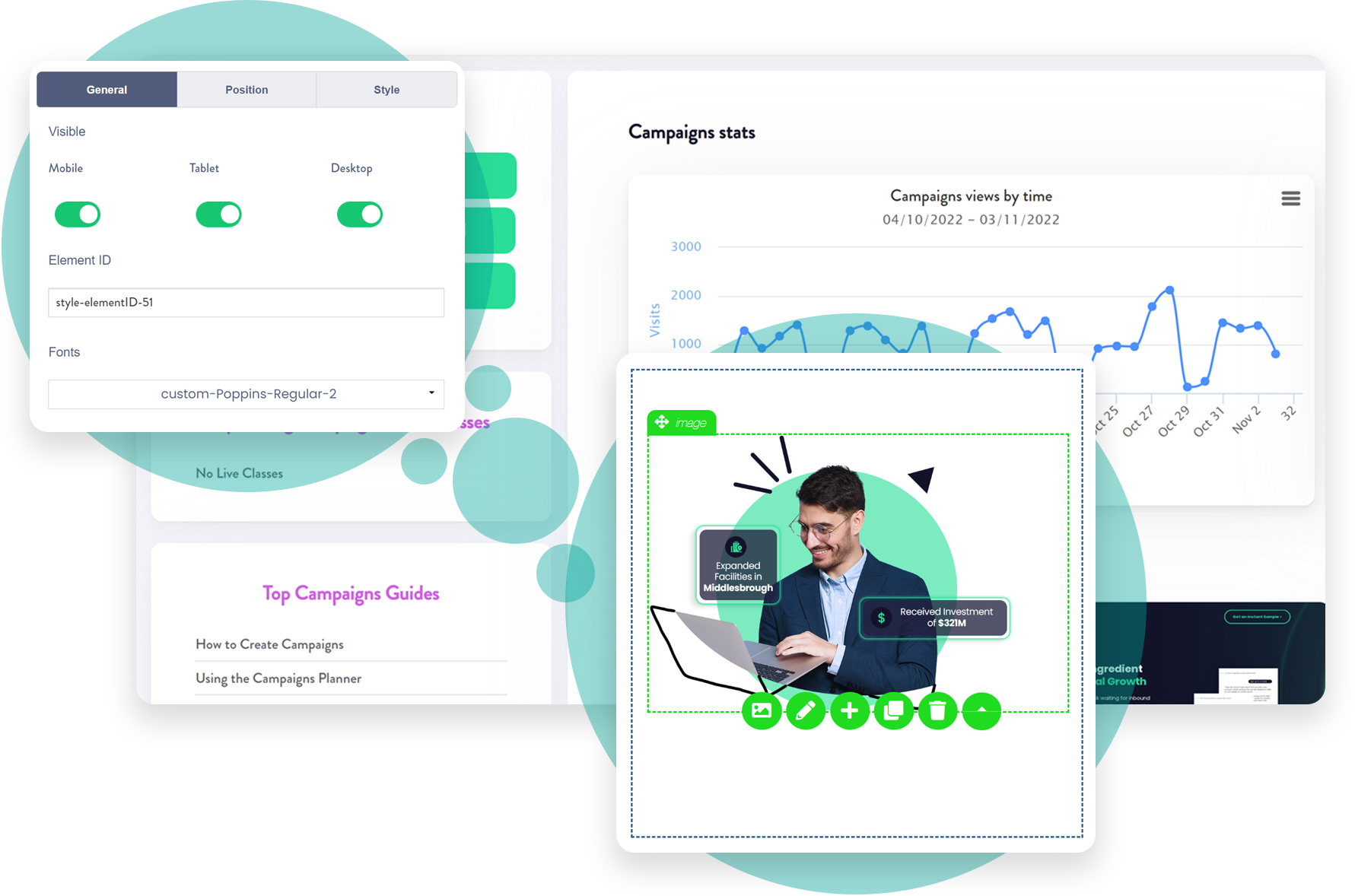
2. A Generic Homepage Visit
Website traffic is important — but not all pageviews are created equal.
A homepage visit could come from a job seeker, investor, competitor, or someone looking for support. It doesn’t tell you much about buying readiness.
Example: An unknown user from a large SaaS company hits your homepage once — but doesn’t view any product or pricing pages.
Don’t act until:
- You see multiple visits from key contacts
- They engage with high-intent pages (e.g. pricing, integrations)
- Activity is validated by other sources (e.g. G2, Foundry)
3. A Webinar Registration with No Show or Engagement
Webinars are great for awareness — but they’re not a buying signal on their own.
Attendance without interaction — or worse, no-show — often signals passive interest or internal research (not decision-making).
Example: A Sales Ops Manager registers for your webinar but doesn’t attend and hasn’t visited your site in the last 30 days.
Instead of qualifying the lead:
Use it as an opportunity to drop them into low-effort nurture — and watch for future signals.
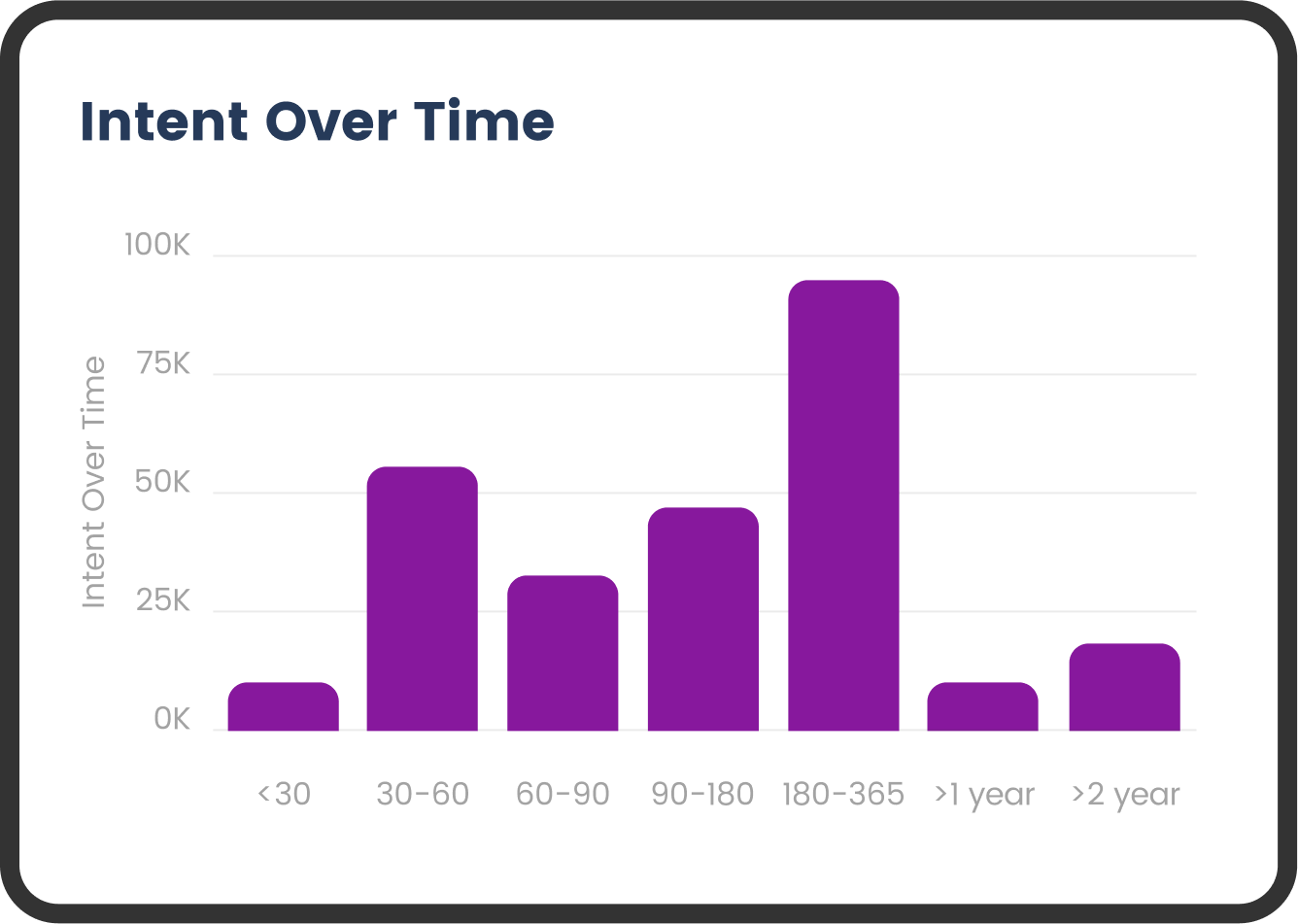
✅ 3 Signals That Do Mean a Buyer Is Ready
Now, let’s look at the kind of signals that do indicate real buying behaviour — and why they matter.
1. Multi-Source Research Surges
This is the #1 indicator that a buyer is entering the consideration phase.
When you see aligned research activity across multiple trusted sources (e.g. Foundry, G2, your own web analytics), it’s a clear sign of intent.
Example: An account begins researching “marketing automation platforms” on Foundry, views a competitor comparison on G2, and visits your features page — all in the same week.
With Zymplify, you can validate these signals in real-time, group them by Research Quadrant™ stage, and act immediately.
Why it works:
It’s not just one action — it’s a pattern. And patterns indicate readiness.
2. Progression from “Interested” to “Active” in the Buyer Journey
Not all activity is equal — and not all timing is right.
That’s why Zymplify uses a behavioural framework called the Research Quadrant™, which maps each account into one of four buyer stages:
- Initial: Early curiosity
- Interested: Starting to explore
- Active: Actively comparing options
- In-Depth: Preparing to make a decision
When an account moves from Interested → Active, that’s your moment.
Example: A RevOps lead who previously downloaded a general guide now starts visiting competitor pages, checking pricing, and researching integrations.
Sales should act when:
- You see progression across the quadrant
- Pageviews and topics shift from “educational” to “evaluative”
- New stakeholders appear (CROs, budget holders)
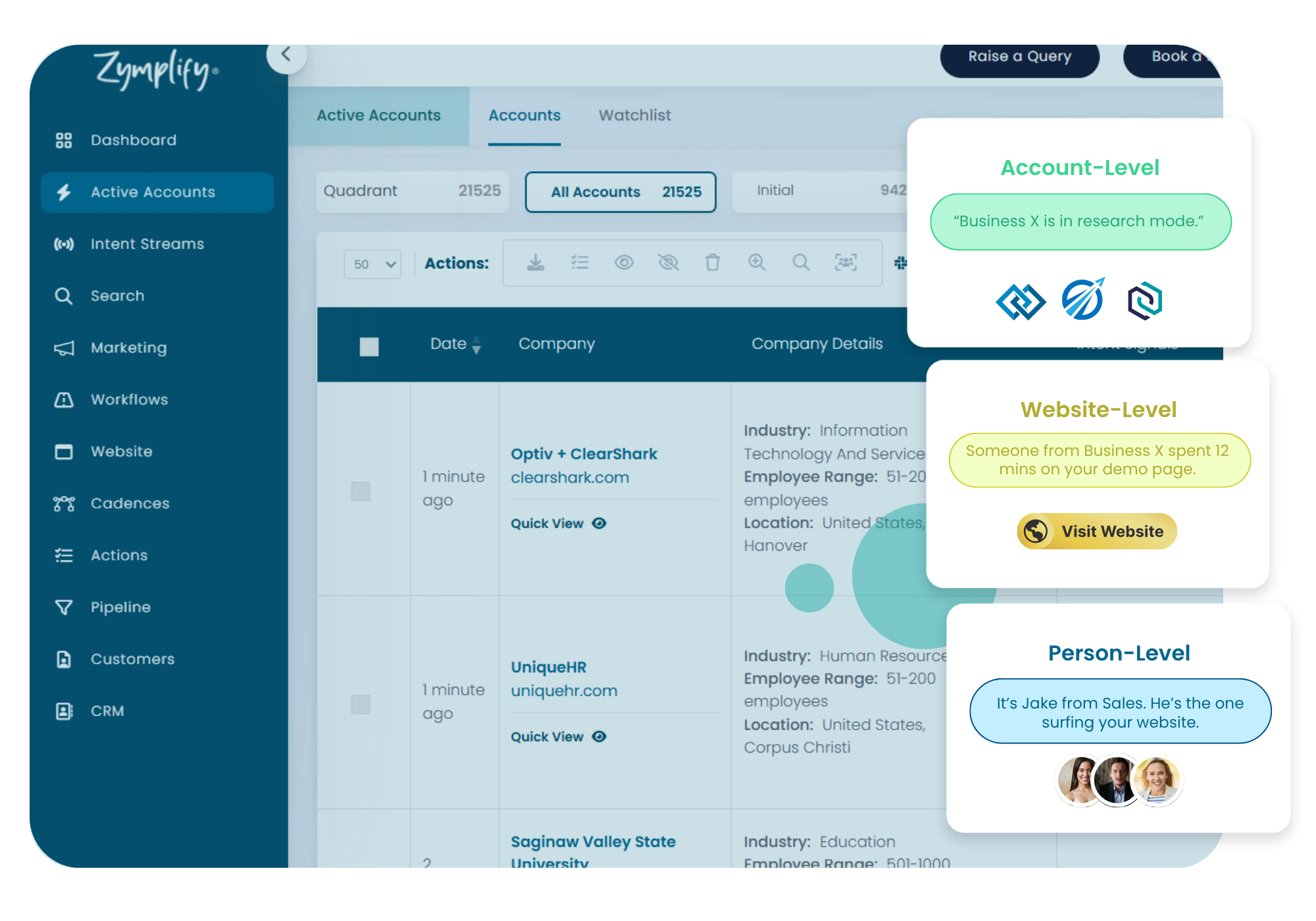
3. Contact-Level Activity from Decision-Makers
Account-level signals are useful. But person-based intent is where you win deals.
When you can identify who inside an account is researching — and what they’re researching — you can personalise outreach, prioritise follow-up, and convert faster.
Example: A Head of Marketing at a target account reads two blog posts about GTM orchestration, visits your “vs. Demandbase” page, and clicks through to your ROI calculator.
That’s not a lead. That’s a deal waiting to happen.
Why it matters:
People — not accounts — drive buying decisions.
Person-level insight turns your data into action.
From Signal to Sales Play: What to Do Next
Knowing the difference between weak and strong signals is critical — but what you do with that knowledge is where the real value lies.
Here’s what top-performing GTM teams do with high-intent signals:
- Validate: Use platforms like Zymplify to confirm buying-stage movement across sources.
- Route: Automatically trigger cadences, outbound, or paid campaigns when accounts show Active or In-Depth intent.
- Personalise: Tailor outreach based on the exact topics and pages viewed by the buying team.
- Align: Ensure marketing and sales are working from the same signal data — not disconnected dashboards.
This is the new revenue motion:
📍 Less guesswork
📍 More signal
📍 Faster pipeline
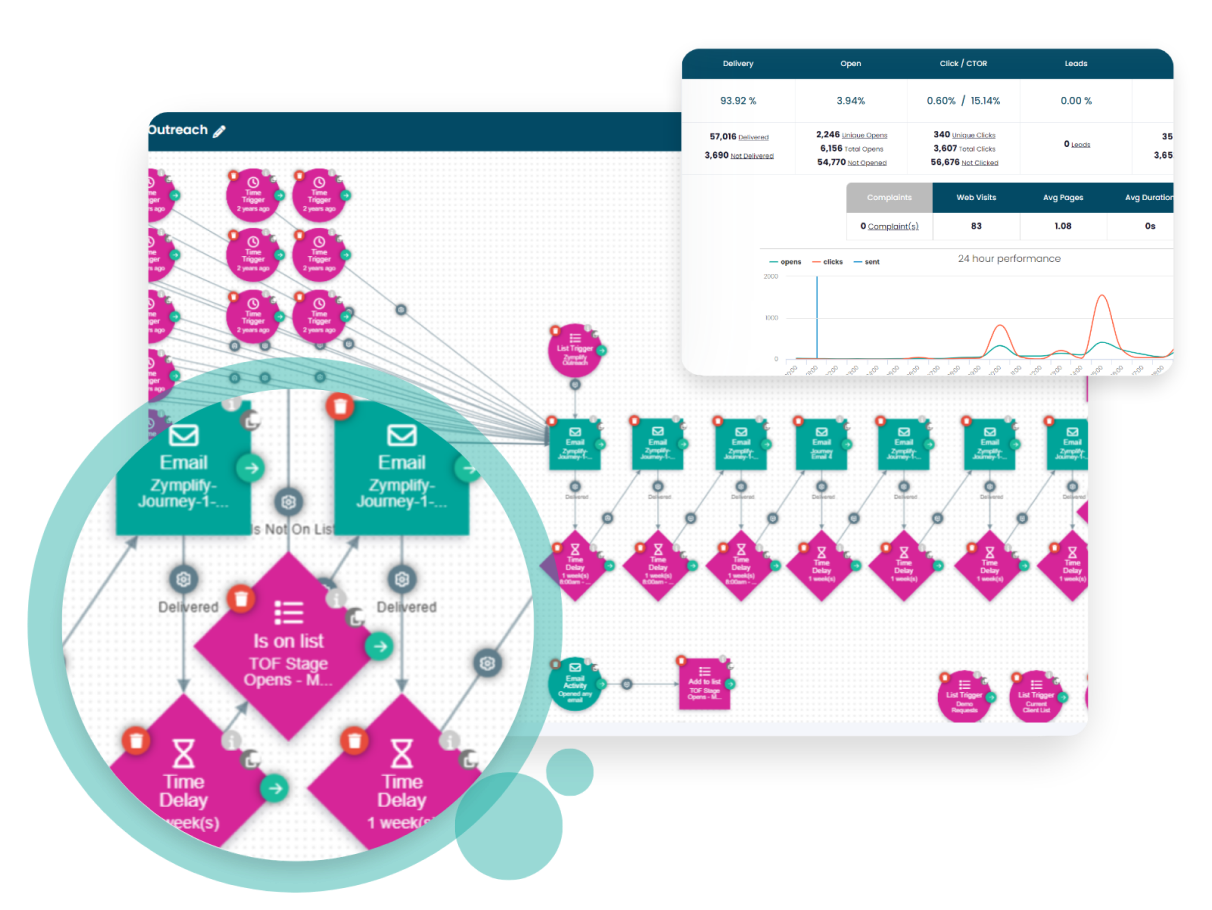
The Bottom Line: Timing > Activity
You don’t need more clicks.
You don’t need more leads.
You need clarity on who’s ready — and when to act.
Buyers are giving off signals every day. The question is whether your team can see them, score them properly, and act with confidence.
If you’re tired of chasing interest and ready to start converting intent…
🎯 Try Zymplify’s GTM Agent for Free Today
→ See which accounts are surging
→ Uncover the decision-makers behind the signals
→ Trigger the right action at the right time — all in one platform
